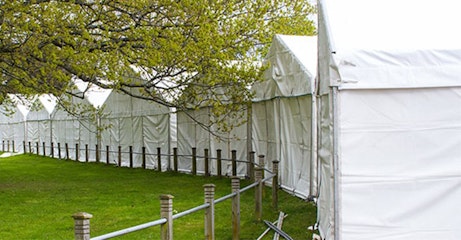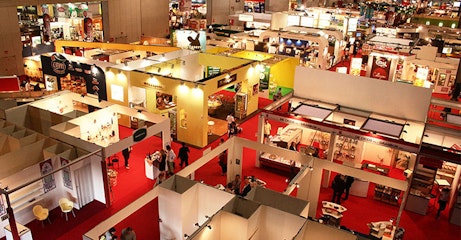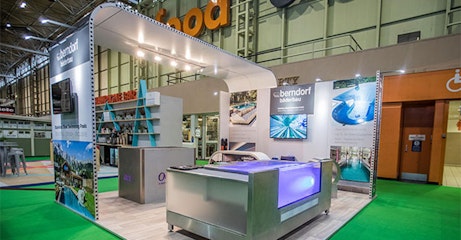If you’re a regular follower of our marketing blog, you may have seen the intriguing statistics from our new exhibition industry report.
For those who haven’t, we wanted to provide the 10 key takeaways from the research to help inform your own trade show marketing strategy in the future.Rather than provide a holistic view of the industry’s performance, we wanted to focus on gathering the opinions of the people who matter most. That is of course, exhibitors themselves.
After all, these are the people who experience the trials and tribulations first hand, so it’s fair to say they know best.
Why we conducted the research
Our primary motivation for producing the report was to rectify the lack of industry-specific data currently available to assist exhibitors.
Whilst this may be one of the most longstanding marketing activities conducted by businesses, most are left in the dark when it comes to trade show exhibiting.
This is a problem.
Not only does this reduce exhibiting down to guesswork, but it also deters other businesses who feel they can’t justify the expense without the existence of a prior framework to aid them.
There’s no doubt that trade shows still have a great significance in the business world, and hopefully, these statistics can provide the springboard for others to realise the vast potential this marketing channel still has to offer.
10 Key Takeaways for Businesses
1. The quality of attendees is the most influential factor when deciding which show to choose.
Always conduct extensive research on a number of shows before agreeing to exhibit.
Look at the event's social media page, as well as searching any relevant hashtags, as this will provide opinions from past exhibitors.
Better still, visit the show before exhibiting. This is so you can get a general feel for things and ask exhibitors for their opinions of the show.
2. Most companies allocate 5-10% of their marketing budget for trade shows and exhibitions.
This is entirely dependant on the nature of your offering.
For high-value products with a longer buying cycle, the face-to-face nature of a trade show may bring greater success, as trust can be established early.
In this case, it would be a good idea to allocate more of your marketing budget to trade shows.
On the flipside, if you are selling low-cost products in high volume, it could be wise to allocate even less than 5%. Instead, turning your attention to digital marketing initiatives.
3. The most common time to start planning your trade show marketing is 1-2 months before the show.
This is by no means best practice. The sooner you start your preparation the better!
By doing this, you can shop around for the best display stand deals, get discounts from the event organisers, and best of all, you can alleviate stress.
4. Email is the most popular method for following up trade show leads.
Again, this would depend on your offering.
However, there are situations where some methods would perform better than others.
If your objective was to collect a small number of high-value leads, a phone call or face-to-face meeting would add a more personal touch.
On the other hand, for e-commerce and software companies in particular, a better method would be email.
This is because the prospect can be directed to video demonstrations of the product/service in use.
Generally, the optimal mix would a combination of email and phone, with face-to-face meetings for higher value orders.
5. Most companies spend between £500-£2000 on trade show displays per year.
How feasible this is will obviously be determined by your overall marketing budget.
That being said, if you're a startup looking to generate a hand full of leads, a cheap display stand will most probably do the job.
Whereas if you are looking to make a big impression, and stand out from the other exhibitors, it would be worth spending more on a modular system, or even hiring a bespoke exhibition stand.
6. 75% of exhibitors surveyed were positive about the future of trade shows.
This stat speaks for itself.
If the people on the frontline are positive about the future of trade shows, this clearly advocates the value they continue to offer.
7. The opportunity to meet potential customers is the biggest advantage of exhibiting at a trade show.
This may come as no surprise, however, we feel this advantage is slightly understated when compared with other forms of marketing.
By exhibiting at a trade show, this enables you to create a personable relationship from the offset and makes you much more memorable than a web page or cold call.
8. The cost to exhibit is the biggest problem associated with exhibiting at a trade show.
Whilst some can be grossly overpriced, not all trade shows are expensive!
There are a number of tactics you can use to reduce your trade show spend.
Furthermore, there are some very reasonably priced events out there. Some of these business conferences start from as little as £150!
9. Having an eye-catching stand is the most successful method of attracting people to your stand.
If you aren’t going all out on the display structure itself, make sure your graphics are truly captivating in order to turn visitor’s heads.
We’ve found that vector icons and high-resolution background images are great for this.
10. The biggest benefit of exhibiting for your staff is the sales skills they can attain as a result.
The more trade shows you do, the more confidence and product knowledge your staff will gain.
What's more, at most events there are normally seminars on improving your sales skills – so this can only help to educate and provide inspiration.Click here to view the Trade Show Trends Report in full.
October 2, 2017
Share this Event







